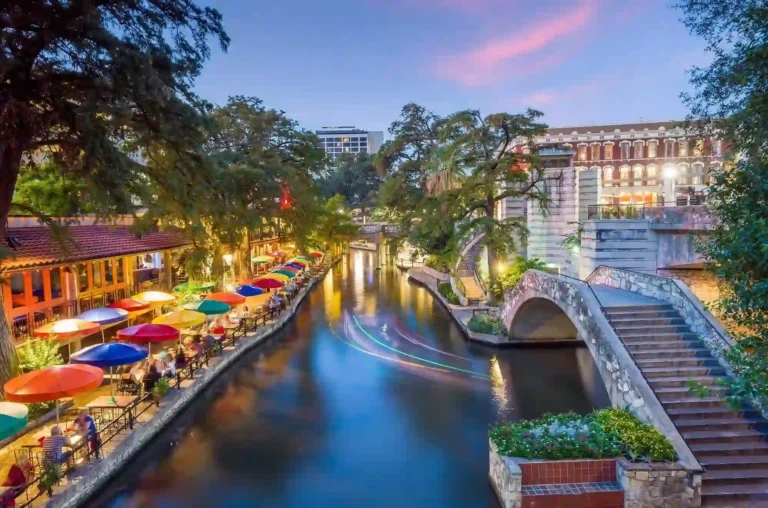12 Hidden Best Mayan Ruins for Travelers (2025 Edition)
When most people think of the best Mayan ruins, their minds instantly jump to Chichen Itza or maybe even Tikal. And sure, those sites are jaw-dropping, but they’re also packed with tour buses, selfie sticks, and long lines under the hot sun. If you’re craving something more authentic, there’s a whole world of hidden temples, remote archaeological site complexes, and jungle-covered pyramids that offer all the awe without the crowds.
This guide dives into 12 lesser-known yet spectacular Maya ruins scattered across Mexico, Guatemala, Belize, and Honduras. Instead of just another highlight reel, you’ll get practical details on how to reach them, what they cost, the best times to visit, and even tips for pairing multiple ruins in one trip. Think of this as your shortcut to exploring the true heart of the Mayan civilization, where howler monkeys echo through ancient plazas and fading murals whisper the stories of forgotten kings.
Quick Picks by Travel Style
Not all travelers are after the same kind of adventure. Some want easy day trips, others are fine with multi-day treks through dense jungle. To make things simple, here are quick picks based on your travel style:
- Easiest Access without a Tour: Edzná in Campeche, only an hour from the city.
- Most Epic Jungle Setting: Yaxchilán on the Usumacinta River, reached by boat.
- Best for Hieroglyphs & Art: Bonampak, thanks to its incredibly preserved murals.
- Best for Climbing (where permitted): The towering Nohuch Mul in Coba, Quintana Roo.
- Best Sunrise/Sunset Spot: Yaxhá in Guatemala, with its twin-lagoon views.
- Great for Families: Lamanai in Belize, paired with a river safari.
This breakdown lets you match sites to your energy level, family setup, or photography goals—so you’re not overwhelmed by choice.
Map & Region Planner (How to Link Sites Into One Trip)
It’s one thing to know which ruins to visit, but stringing them together into a trip takes some planning. The Yucatan Peninsula holds a cluster of gems in Campeche and Quintana Roo, while Chiapas offers riverfront wonders along the Guatemalan border. Cross into Guatemala’s Petén region, and you’ll find sprawling cities like El Mirador and Yaxhá. Belize’s Cayo District and northern jungles host giants like Caracol and riverside spots like Lamanai. Finally, Honduras hides Copán with its famous Hieroglyphic Stairway.
Here’s how you might plan it:
- 7 Days (Belize Focus): Caracol + Lamanai, with a quick Guatemalan add-on to Yaxhá.
- 10 Days (Mexico Focus): Calakmul, Edzná, Becan, Bonampak, and Yaxchilán.
- 14 Days (Grand Loop): Start in Mexico, hop into Guatemala for Yaxhá and Uaxactún, and finish in Belize with Caracol.
Traveling during the dry season (November–April) means easier road and river conditions, though some treks (like El Mirador) are still challenging. Wet season brings lush landscapes, but expect muddy trails and more mosquitoes.
1. Calakmul, Mexico (Campeche) — Royal City in a Biosphere
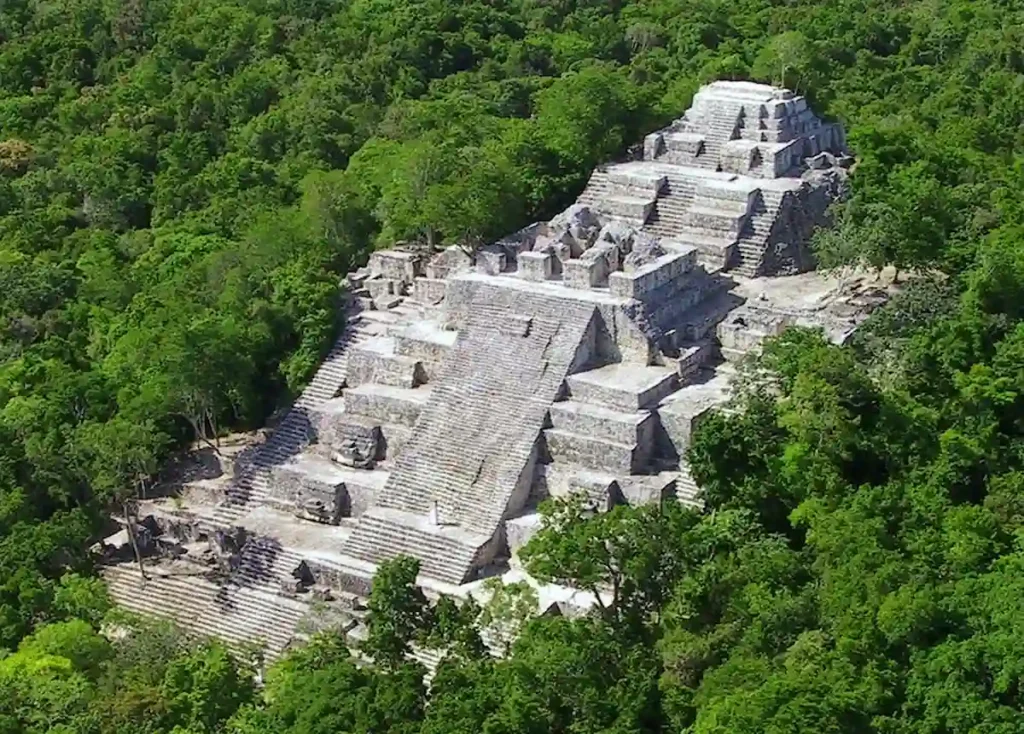
Hidden deep inside the Calakmul Biosphere Reserve, this site feels like stepping back into the heart of the Maya Empire. Unlike the busier ruins closer to the coast, Calakmul rewards those willing to drive 60 km through dense jungle roads with towering temples, wildlife sightings, and a true sense of isolation.
Practical details: Entrance fees hover around $6–7 USD, plus a small charge for access through the reserve. You’ll need a car (preferably with good suspension), as public transport doesn’t reach this far. Go early in the morning to beat the heat, and bring water—shade is limited once you’re climbing the structures.
Why it’s special: The sheer scale is overwhelming. Some temples rise higher than the canopy, giving you panoramic jungle views. Photography here is stunning around sunrise, when mist clings to the treetops. The lack of crowds means you often have plazas to yourself, perfect for quiet exploration.
2. Yaxchilán, Mexico (Chiapas) — Riverboat Ruins on the Usumacinta

Visiting Yaxchilán is half the adventure. To reach it, you’ll need to take a boat down the Usumacinta River, which also forms the border between Mexico and Guatemala. Boats leave from Frontera Corozal, and the round trip usually costs $40–50 USD per group. Don’t forget your passport—there’s an immigration checkpoint nearby.
What makes it unforgettable: Imagine drifting downriver with jungle cliffs on both sides, then stepping into plazas where ancient stelae still show off the Mayan writing system. Howler monkeys echo through the trees, adding an eerie soundtrack to your visit.
Traveler tips: Bring insect repellent, especially during the wet season. Guides can help decode the stories carved into the stone, making the site more than just a collection of ruins. If you’re interested in linking sites, you can combine Yaxchilán with Bonampak in a single long day.
3. Bonampak, Mexico (Chiapas) — Painted Murals of the Classic Maya
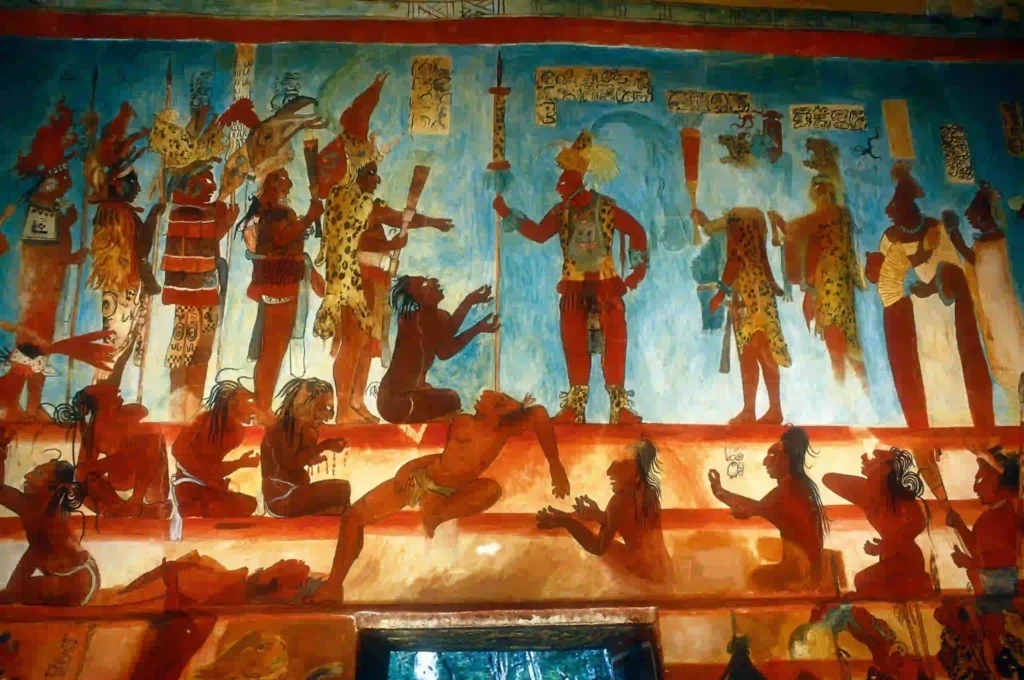
Bonampak may not have the tallest temples, but it holds something incredibly rare: vibrant murals that show Mayan rituals, music, and even scenes of battle. These paintings are considered among the finest surviving artworks of the ancient world, and they’re carefully protected from light exposure.
What you should know: Access is tightly regulated. Visitors must transfer from the main parking area into community-managed vehicles, which adds a small fee but supports local families. Inside, you’ll only get a short time in the mural rooms, so plan ahead if you want to really observe the details.
When to go: Morning visits are best since fewer groups mean more time in the mural chambers. Pairing Bonampak with Yaxchilán makes for a rewarding, history-rich excursion in Chiapas.
4. Becán, Mexico (Campeche) — Moat-Encircled City of the Río Bec
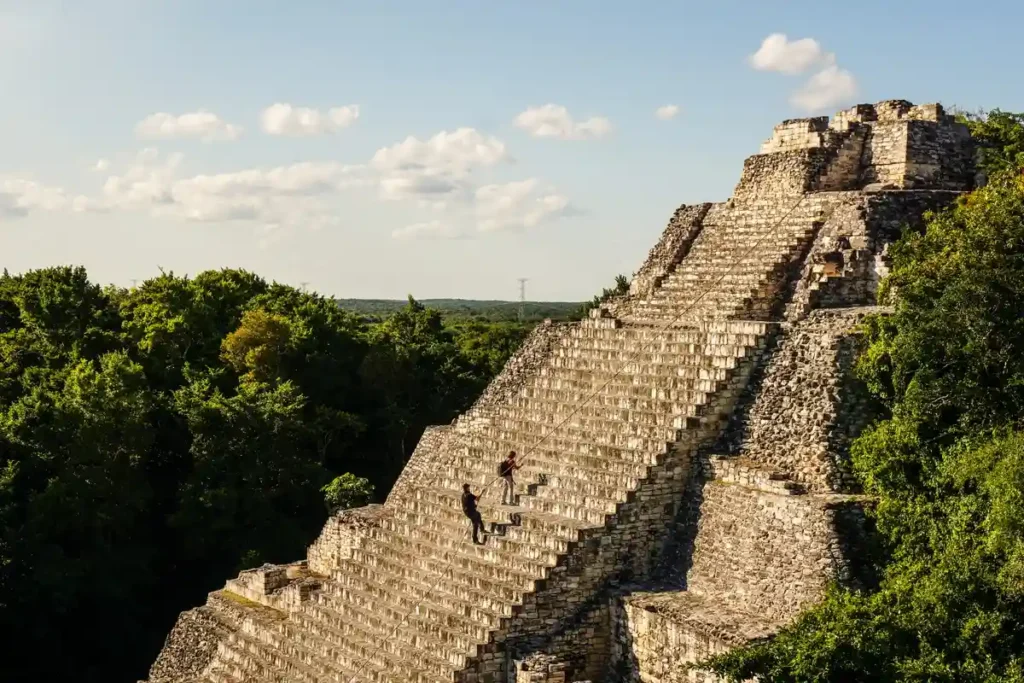
Becán stands out for something few other Mayan ruins have: a defensive moat that still circles the old ceremonial center. Walking across the bridges into the site gives a sense of how important defense was in the Río Bec region, especially during times of rivalry between nearby cities.
Travel details: Becán is easy to combine with other Campeche sites like Chicanná and Xpuhil. Entry costs are modest (about $4–5 USD), and the ruins don’t get much tourist traffic. The structures are climbable, though staircases can be steep, so good footwear is a must.
Why visit: It’s quieter than Calakmul and more compact, making it ideal for travelers who want a shorter visit without sacrificing atmosphere. From the higher temples, you’ll see dense jungle stretching endlessly in every direction.
5. Kohunlich, Mexico (Quintana Roo) — Temple of the Masks
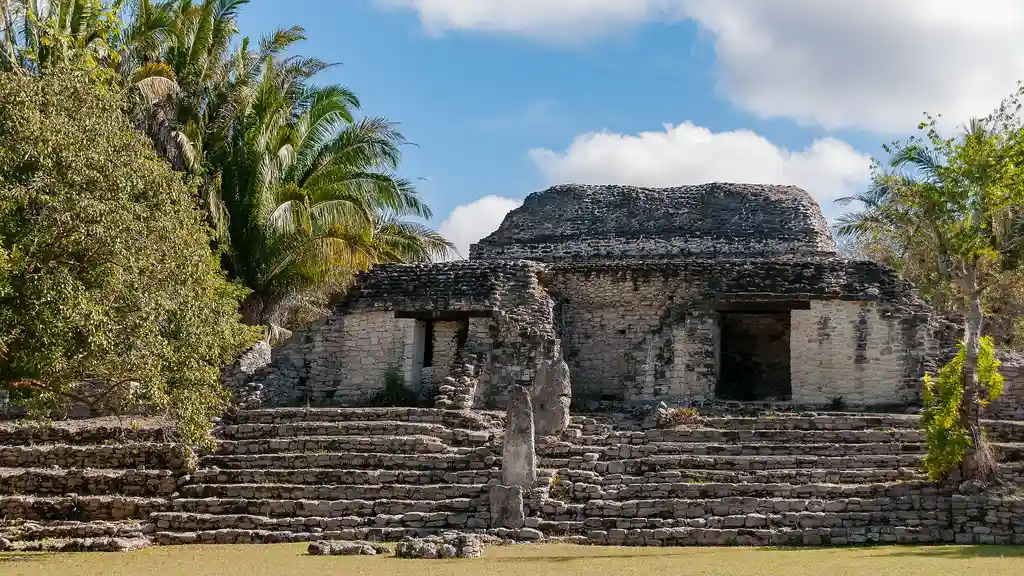
If you’re traveling through Quintana Roo, don’t miss the Kohunlich Ruins, famous for their Temple of the Masks. These massive stucco masks of the sun god still look imposing, even after more than a thousand years. Each mask once flanked the stairway of the pyramid, watching over rituals and ceremonies.
Getting there: Kohunlich is about 65 km from Chetumal, along decent paved roads. Many visitors combine it with the Dzibanche Ruins, or even with a stop at the Bacalar Lagoon, which makes for a refreshing swim after climbing temples.
Insider tip: The site is shaded by tall cohune palms (where the name comes from), making it more comfortable than many ruins in the Yucatán. Bring a camera with good low-light ability, as the masks photograph beautifully in soft jungle light.
6. Edzná, Mexico (Campeche) — Five-Story Temple & Canal System
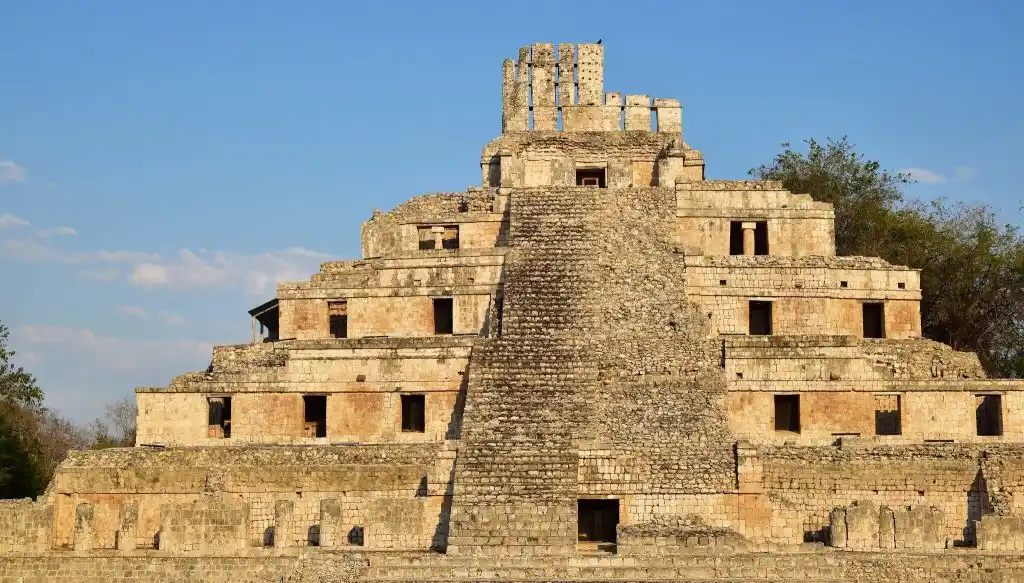
Edzná is a favorite among history buffs thanks to its unique water management system. Canals and reservoirs once supported thousands of residents here, showing off the engineering genius of the Mayan civilization. At its center stands the Gran Basamento, a massive platform topped with a five-story temple you can still climb for wide views.
Visitor details: Located just 50 km from Campeche City, Edzná is one of the most accessible sites in the region. Entrance fees are around $4 USD, and buses or colectivos can get you close if you don’t have a rental car. Best time to visit is late afternoon, when the golden light hits the temple façade.
Why it’s worth it: The climb is steep, but reaching the top of the Gran Basamento at sunset feels like being suspended between past and present. Few sites combine architectural complexity and easy logistics as well as Edzná does.
Read Also: Top 10 Pyramids in Mexico You Have to See Before You Die
7. El Mirador, Guatemala (Petén) — Multi-Day Jungle Trek to a Lost Capital
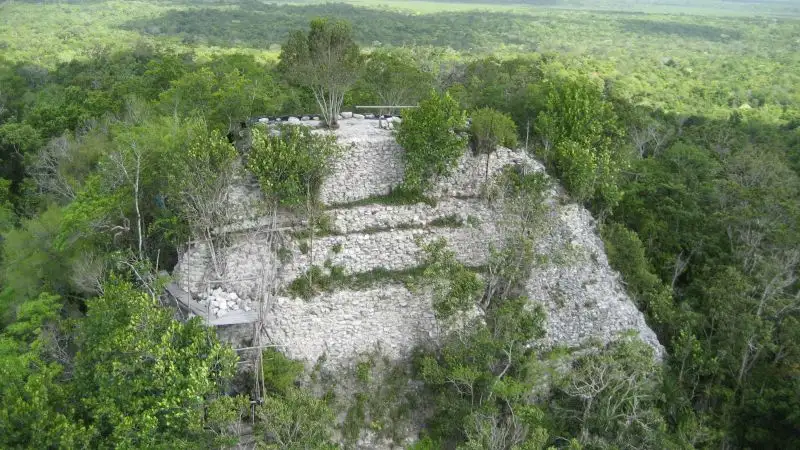
El Mirador isn’t just a ruin; it’s an adventure. This massive city lies hidden in the northern Guatemalan jungle, accessible only by a demanding 5–6 day trek or, for those short on time, a helicopter ride from Flores. The effort is worth it: El Mirador is home to some of the largest structures of the ancient world, including the colossal Temple One, which dwarfs many other pyramids in size.
Travel notes: If you choose the trek, expect to cover 20–25 km per day through dense forest. Pack light but smart—quick-dry clothing, electrolytes, and mosquito protection are essential. Guides are mandatory, both for safety and navigation. A heli trip costs more (around $250–300 USD), but it allows you to see the scale of the city from the air.
Why it’s special: Standing atop the giant platforms, you’ll be rewarded with an endless sea of green jungle stretching to the horizon. It feels like discovering a world frozen in time.
8. Yaxhá, Guatemala — Pyramids Over a Twin-Lagoon Sunset
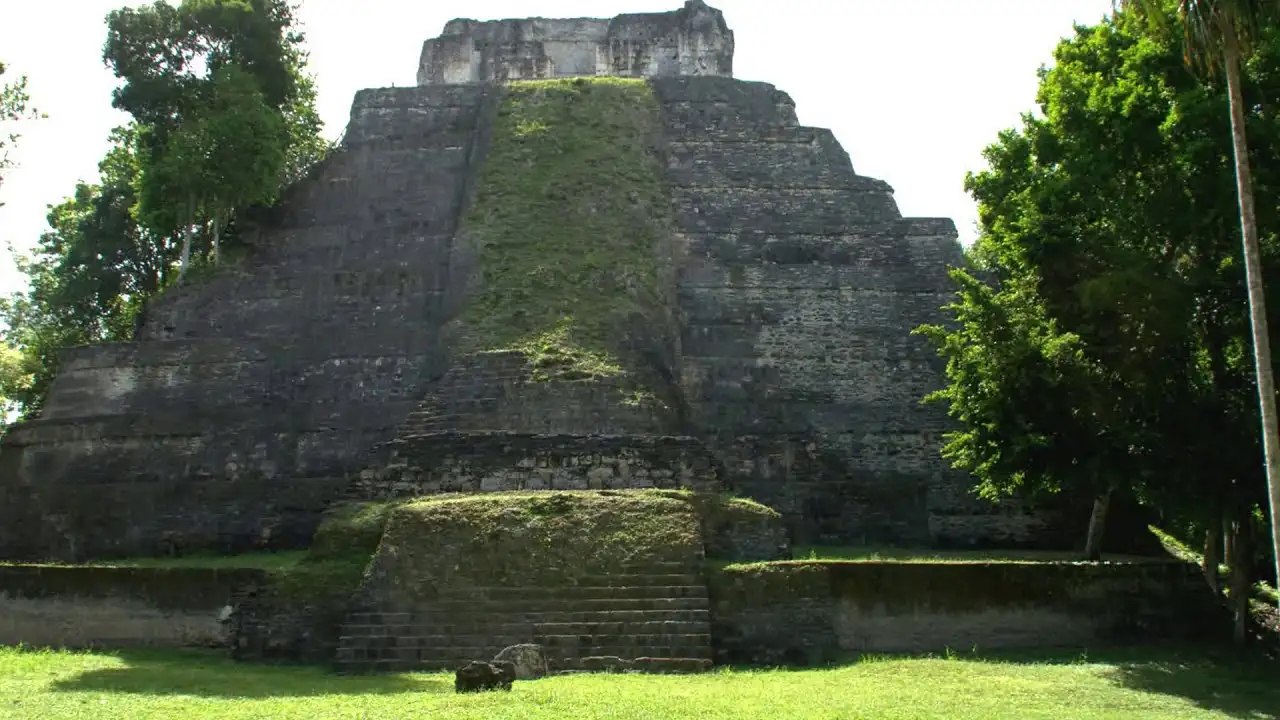
If you’re after incredible views, Yaxhá delivers. Perched between two shimmering lagoons, this site offers one of the most spectacular sunset experiences in the Maya world. Climb the tallest pyramid, and you’ll watch the sun sink into the jungle canopy while birds skim across the water.
Traveler logistics: Yaxhá is about an hour and a half from Flores, making it an easy day trip. Entrance fees are around $10 USD, and guided tours often combine Yaxhá with nearby Nakum or Naranjo for a full-day excursion. Late afternoon is best—the site stays open for sunset, unlike many other ruins.
Cultural highlight: Archaeologists believe Yaxhá was a hub of Mayan astronomy, where the alignment of temples mirrored celestial events. Visiting at dusk makes it easy to imagine how ancient priests once tracked the heavens.
9. Uaxactún, Guatemala — Astronomical Group in a Living Maya Village
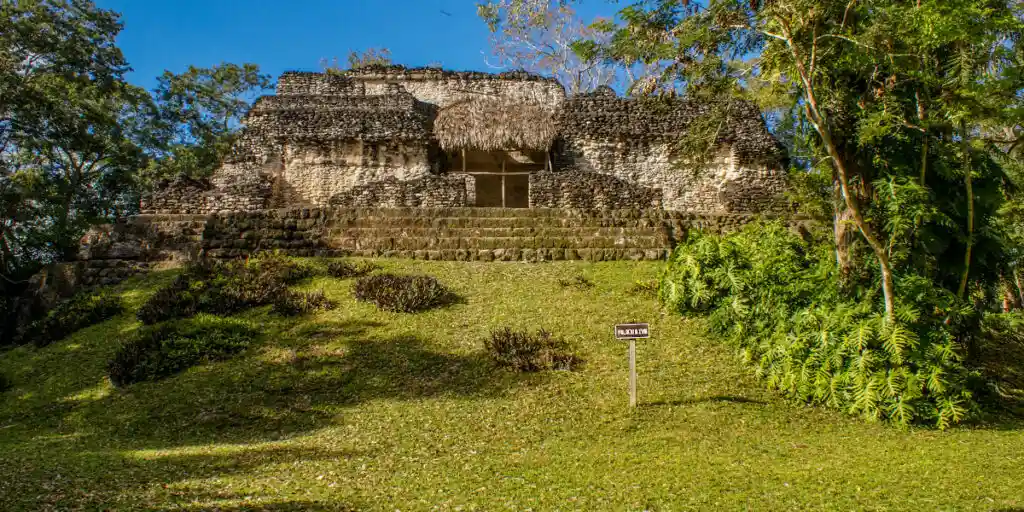
Just north of Tikal lies Uaxactún, a unique blend of ancient city and modern community. Here, families still live within the ancient grounds, giving the site a warm, authentic feel you don’t always find elsewhere.
Why go: Uaxactún is famous for its ancient observatories, where priests developed one of the most sophisticated calendar systems in the world. Standing in the plazas, you can see how structures align with solstices and equinoxes—clear proof of the Mayan astronomy genius.
Traveler tips: Uaxactún can be reached by road in about 45 minutes from Tikal. Community-run tourism offers camping, meals, and guided stargazing. Staying overnight lets you enjoy a rare experience: watching the stars rise above ancient temples in near-total silence.
10. Aguateca, Guatemala — Dramatic Cliff-Top Fortifications
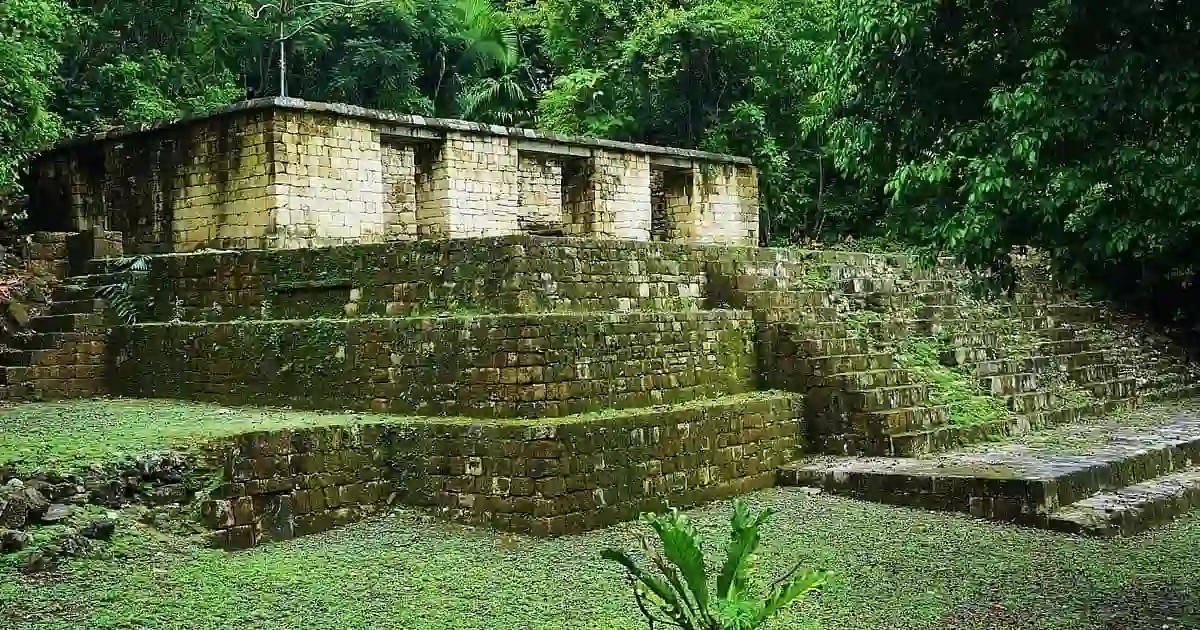
Perched high above the Petexbatún Lagoon, Aguateca is one of the most dramatic archaeological site settings in Central America. The city was strategically built along a cliff edge, with natural defenses that made it nearly impossible to conquer. Today, you’ll walk through plazas where stone carvings still stand guard and explore narrow passageways once used by warriors.
Getting there: Access is a mix of road and boat from Sayaxché, with the final leg by river. Costs run around $30–40 USD per boat, depending on group size. Bring sturdy shoes—paths can be uneven, and the cliff edges are steep.
Highlight: Wildlife spotting is half the fun. Expect to see toucans, spider monkeys, and maybe even crocodiles along the river. Few visitors make it here, so you may share the entire site with just a handful of people.
11. Caracol, Belize (Cayo) — Sky Palace & a Vast Ancient City
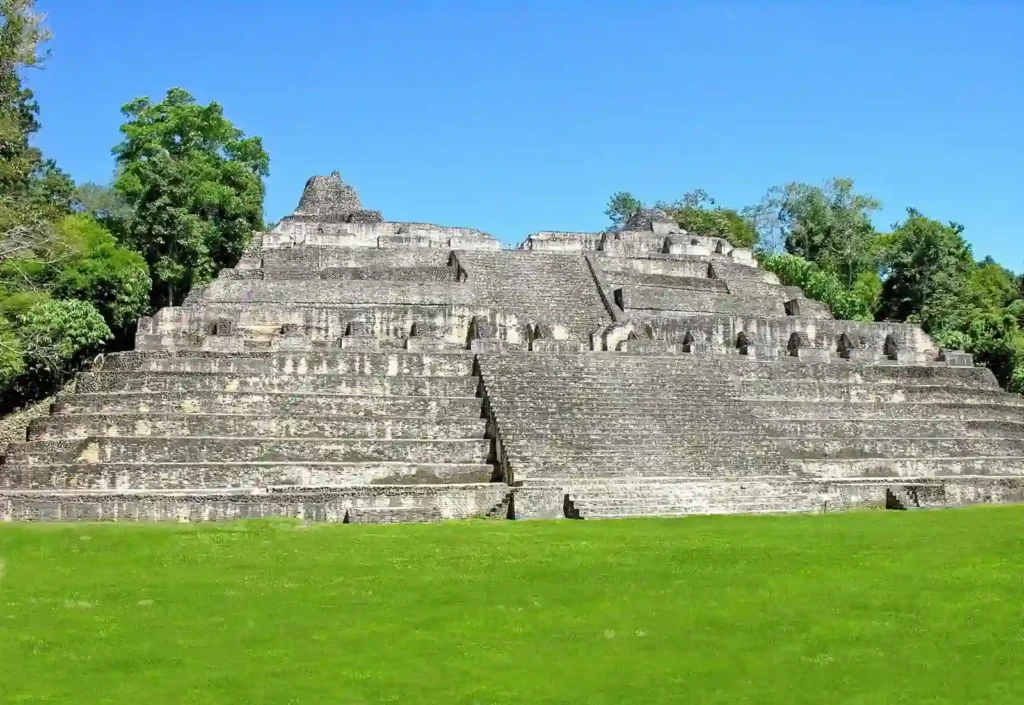
Caracol is one of the giants of the Maya world, hidden deep in the Cayo District. Its main temple, the Sky Palace, rises 43 meters high and remains the tallest man-made structure in Belize. Unlike busier sites, Caracol is raw and wild, surrounded by dense jungle and teeming with history.
Practical details: The road to Caracol is rough and often requires a 4×4. On some days, a ranger convoy escorts vehicles for safety. Entry fees are about $5 USD, and you’ll want to set aside most of a day here. Many travelers combine the trip with a stop at the Rio On pools for a refreshing swim after exploring.
Cultural note: Walking among the temples, you’ll feel the scale of a once-thriving city that rivaled even Tikal in size. Archaeologists are still uncovering new areas, which means each visit offers fresh discoveries.
12. Lamanai, Belize — River Safari to a Temple Skyline
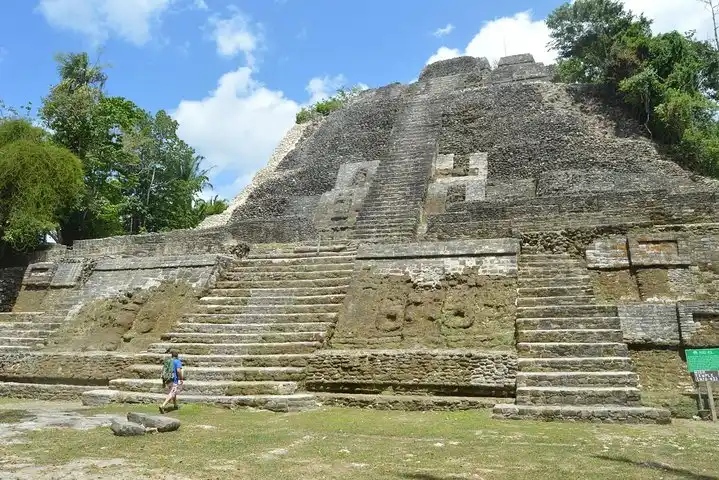
Reaching Lamanai is an adventure in itself. Most travelers start from Orange Walk and take a boat up the Mopan River, gliding past crocodiles, iguanas, and exotic birds. The journey sets the tone perfectly before you step off into plazas framed by giant ceiba trees.
Why it’s unique: Lamanai’s name means “Submerged Crocodile,” and the site delivers on its wild reputation. Climbing the High Temple gives you a sweeping view of the lagoon and jungle canopy. The sounds of howler monkeys echoing around the temples make it unforgettable.
Travel tips: Entrance is around $10 USD, and the boat tour (usually $35–40 USD per person) includes a guided walk. Many tours add lunch stops with local families, which makes the experience feel much more personal. This blend of river adventure and ruins makes Lamanai one of the most family-friendly picks on the list.
Planning Essentials (What Most Guides Skip)
Visiting the best Mayan ruins isn’t just about hopping on a bus tour — there are real logistics travelers often overlook.
- Visas & Borders: If you’re crossing between Mexico, Guatemala, Belize, or Honduras, keep your passport handy. Land borders sometimes charge small fees ($2–5 USD). Make sure you get official receipts.
- Money Matters: Most sites only accept cash. ATMs are scarce outside major towns, so carry small bills in local currency. Museums sometimes take cards, but don’t count on it.
- Tickets & Rules: Some ruins are part of a UNESCO World Heritage designation (like Calakmul or Copán), so expect stricter rules about climbing, touching glyphs, or using drones. Always double-check local regulations.
- Health & Safety: The jungle is hot and humid. Bring electrolyte packets, a hat, and at least 2 liters of water per person. Snake or scorpion sightings are rare, but good footwear and a flashlight are smart precautions.
- Packing Tips: Essentials include sunscreen, quick-dry layers, insect repellent, a small towel, and a lens cloth for cameras. If visiting in wet season, a rain cover for your backpack is a lifesaver.
On-Site Fieldcraft & Photography
How you explore the ruins makes a big difference. A few smart choices will make your visit much more rewarding:
- Beating Crowds: Arrive at opening hours or aim for late afternoon. Cruise-day patterns in Costa Maya Port can flood sites like Chacchoben and Kohunlich, so check ship schedules.
- Light Conditions: Jungle light is tricky. Midday sun is harsh, but early morning gives soft detail for carvings, while sunset works best for silhouette shots. The Gran Basamento at Edzná glows beautifully in golden-hour light.
- Photography Gear: A simple wide lens captures towering temples, while a zoom is handy for monkeys and birds. For phone users, enable HDR for better balance under heavy shade.
- Soundscapes: Sometimes the best memory isn’t visual. Pause to listen at dawn when howler monkeys roar, or at dusk as flocks of parrots return to roost. These audio moments bring the ruins to life.
Compare & Choose Table (Skimmable Matrix)
Here’s a quick reference to help you decide which sites match your travel style:
| Site | Country/Region | Access (Road/Boat/Trek) | Time Needed | Climb? | Best Light | Family-Friendly | Facilities | Crowd Level |
|---|---|---|---|---|---|---|---|---|
| Calakmul | Mexico (Campeche) | Road (long drive) | Full day | Yes | Sunrise views | Moderate | Limited | Very low |
| Yaxchilán | Mexico (Chiapas) | Boat on Usumacinta | Half day | No | Morning shade | Moderate | None | Very low |
| Bonampak | Mexico (Chiapas) | Road + community shuttle | Half day | No | Morning | Moderate | Limited | Low |
| Becán | Mexico (Campeche) | Road (easy access) | 2–3 hrs | Yes | Morning | Easy | Basic | Low |
| Kohunlich | Mexico (Quintana Roo) | Road (paved) | 2–3 hrs | Limited | Afternoon light | Easy | Basic | Medium |
| Edzná | Mexico (Campeche) | Road (near Campeche) | 3–4 hrs | Yes | Sunset glow | Easy | Good | Medium |
| El Mirador | Guatemala (Petén) | Multi-day trek/heli | 5–6 days | Yes | Sunrise/sunset | Advanced only | None | Very low |
| Yaxhá | Guatemala (Petén) | Road (near Flores) | Half day | Yes | Sunset | Moderate | Basic | Medium |
| Uaxactún | Guatemala (Petén) | Road (near Tikal) | Half day+ | Limited | Night sky | Easy | Community | Low |
| Aguateca | Guatemala (Petén) | Road + boat | Half day | No | Morning | Moderate | None | Very low |
| Caracol | Belize (Cayo) | Road (rough, 4×4) | Full day | Yes | Morning | Moderate | Basic | Low |
| Lamanai | Belize (Orange Walk) | Boat on lagoon | Half day | Yes | Afternoon | Excellent |
Responsible & Inclusive Visiting
Traveling through the ruins isn’t just about seeing stones; it’s about respecting living cultures and fragile heritage.
- Heritage Etiquette: Don’t touch glyphs or climb restricted pyramids. Sites like Chichen Itza’s Temple of Kukulcán are closed to climbing, while others like Coba’s Nohuch Mul pyramid (sometimes open) require extra care.
- Community Tourism: Many sites, like Uaxactún or Bonampak, rely on local guides for access. Booking with them supports families directly and often gives you deeper insights into traditions.
- Accessibility: Some ruins have shaded paths and seating (like Lamanai), while others, like El Mirador, are only for the fit and adventurous. Plan based on your comfort level.
- Sustainability: Bring refillable bottles, pack out trash, and avoid single-use plastics. Natural reserves like Sian Ka’an Nature Preserve link ruins to delicate ecosystems—treat both with respect.
Conclusion
Exploring the best Mayan ruins doesn’t mean following the same crowded paths to Chichen Itza or Tikal. Across Mexico, Guatemala, Belize, and Honduras, hidden cities like Cahal Pech, El Pilar, and Nim Li Punit reveal a quieter but no less powerful side of the Maya ruins. Whether you’re climbing the Nohuch Mul pyramid in Quintana Roo, gazing over the Bacalar Lagoon after a day at the Chacchoben Ruins, or tracing glyphs along Copán’s Hieroglyphic Stairway, every site offers a glimpse into the brilliance of an ancient world.
As you plan, remember the practical side: bring cash, time your visits outside cruise schedules, and respect climbing restrictions—especially at UNESCO World Heritage sites. Most of all, travel thoughtfully. Each visit supports conservation and local communities, ensuring these ruins remain standing for generations of curious travelers.
So pack your hat, water bottle, and sense of wonder. The jungle is waiting.
FAQs
Which lesser-known ruins are best for first-timers?
Yaxhá in Guatemala and Kohunlich in Quintana Roo are great introductions—easy to reach but still off the main tourist trail.
Can I visit Yaxchilán or Lamanai without a tour?
Technically yes, but in practice no. Both require boats, which are managed by local cooperatives. Hiring them is straightforward and supports the community.
Is it safe to self-drive to Calakmul or Caracol?
Yes, with preparation. Caracol often requires a convoy; check the latest advice locally. Calakmul’s long jungle road is safe but remote, so carry extra fuel and water.
When is the best season for jungle ruins?
Dry season (Nov–Apr) is easier for transport. Wet season brings lush greenery but mud and more mosquitoes.
Are any pyramids still climbable?
Yes. The Nohuch Mul in Coba and several structures at Edzná and Caracol are open, though rules change. Always respect posted signs.
Are drones allowed?
Often not, especially at UNESCO-protected sites. Some locations offer special permits for professionals at extra cost.
Do I need cash for entrance fees?
Yes. Most sites don’t take cards, so plan accordingly.
What’s the minimum time per site?
Smaller sites like Becán can be done in 2 hours. Bigger ones like Calakmul or Caracol need a full day.
What’s the best kid-friendly pick?
Lamanai, with its boat ride and wildlife encounters, keeps younger travelers engaged.





